This article first appeared in Charity Financials, February 2021.
It can also be read here
Every David Attenborough fan knows the planet is in crisis. Our use of fossil fuels has led to rapid change in climate that is putting communities and habitats across the globe at risk.
The UN’s Paris Agreement said we must limit global warming to well below 2°C, and preferably 1.5°C, compared to pre-industrial levels. Countries have set individual targets for decarbonisation that will achieve this temperature goal and create a climate neutral world by the middle of this century.
These targets lead governments to look for ways to transform their economies and societies based on the best available science. In the UK, our Nationally Determined Contribution (NDC) is to reduce economy wide greenhouse gas emissions by at least 68% by 2030, compared to 1990 levels.
The UK government will be hosting the next COP26 conference in Glasgow at the end of this year. This will be the first time since the pandemic that the 196 signatory governments will come together to discuss their NDCs and how much progress they have made towards achieving the Paris Agreement targets.
Mark Carney, the former Bank of England Governor, is now the UN special envoy for climate action and finance. He is leading the global attempt to get business and the finance sector ready for the challenges of delivering a climate neutral society. A key area of his focus is innovation finance in the private sector.
Renewable energy is already receiving huge amounts of investment. In 2019 global investment in clean energy capacity rose 1% to US$282.2bn. According to the International Energy Agency (IEA), clean energy and efficiency accounted for 37.3% of total energy investment, a 4% rise over 2018.
This might seem to beg the question of whether there is a role for charities and community groups to play in this sector? SASC’s answer is yes. Since we started lending in 2014, over half of our investments have been in community renewables. Most of this funding has helped local organisations to build and manage wind and solar farms for the benefit of their community.
The way these organisations are now delivering renewable energy sets them far apart from the way the mainstream renewables sector pursues mostly profit. This difference is what attracts our investment. Our mandate at SASC is to provide flexible financing to outstanding, local charitable organisations. We aim to unblock markets and make things happen that otherwise wouldn’t.
So, what do these organisations do that is so different? First, they tighten community bonds. The process of establishing a community-interest group around a common purpose, engaging with local landowners and then running a business is not trivial. Intermediaries and support networks exist which can help this process, but only local good will and effort will make it work.
Second, these community groups are looking to address local problems, both economic and social. Each wind or solar farm brings employment to the local area. In a lot of community renewables projects, some funding has come from community bonds issues, meaning at least part of the profit is returned to local shareholders.
On the social impact side, each community renewables project creates an opportunity to develop funding for local initiatives. Every investment we make is based on a double bottom line. That is, it needs both to make a financial return and to create a social benefit in a local community. Each community renewables project we have invested in has set up a local community benefit fund that receives a proportion of the profit to spend on local programmes. Fittingly, an issue that many of these projects address is local fuel poverty.
Fuel poverty is a complex problem that is closely linked to broader issues of social inequality. It is also a killer. Age UK estimates that 25,000 older people die each year because of the cold weather and 4.5 million older people live in fuel poverty. Three key factors help to cause fuel poverty: low income, high fuel prices and the growing energy requirements of a household. Government calculates an annual fuel poverty gap. This is the reduction in fuel bill that the average fuel poor household needs in order to not be classed as fuel poor. A local organisation will know the best way to target support within its own community – for example, helping with bills or giving grants to support networks.
One example of this kind of project in our portfolio is the investment we made in 2016 in the Bristol Energy Cooperative (BEC). This community owned solar farm has installed over 9MW of solar and battery assets, worked with local businesses and created local jobs. The community benefit fund BEC works with has made over £250,000 of grants in the local area.
At SASC we work with local charities and community groups to help fund this work. Whether you want support with the build, management or legal aspects of one of these projects, we have a solid network in the sector that we can connect you to. One of our funds specialises in bridging loans during the development phase of building the turbine or solar farm. SASC can also help with financing a broad array of community-targeted projects.
[1] https://www.theguardian.com/commentisfree/2020/feb/27/dying-cold-europe-fuel-poverty-energy-spending
[2] https://www.ageuk.org.uk/globalassets/age-uk/documents/reports-and-publications/evaluation-reports/winter_warmth_impact_report.pdf
[3] https://www.gov.uk/government/collections/fuel-poverty-statistics
[3] https://www.iea.org/reports/world-energy-investment-2020/key-findings
[4] This includes investments made by Leapfrog Bridge Finance with we acquired in 2020


